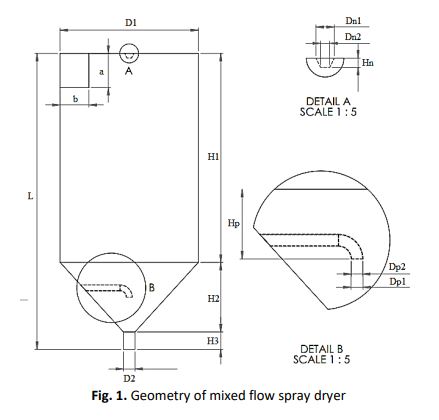Investigation of Water Content and Minimum Droplet Temperature of Spray Drying Product with Inlet Temperature and Air Flow Direction Variation Using CFD Method
DOI:
https://doi.org/10.37934/arfmts.95.2.99112Keywords:
Spray dryer, water content, droplet temperatureAbstract
This study aimed to analyze the effect of inlet temperature and airflow direction variation of a spray dryer on the product’s water content and minimum droplet temperature using the means of computational fluid dynamics (CFD). The airflow direction types were mixed and co-current. To simulate the flow, the k-ω SST and standard k-ε models were utilized, and the Eulerian-Lagrangian approach was used to estimate particle motion. The simulation results showed that water content reduced as temperature climbed for both airflow directions and vice versa for the minimum droplet temperature. With droplets diameters of 10 μm and 30 μm and an inlet temperature of 180°C, both mixed flow and co-current flow spray dryer generated the lowest water content (0%) output. The lowest minimum droplet temperature (32.73°C) occurred in the mixed flow spray dryer with an inlet temperature of 100°C.
Downloads

































